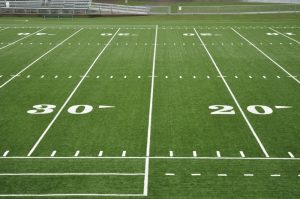 As American football teams prepare to select new team members later today, fans and pundits can only guess how the draft will turn out. Will your favorite professional team make good picks? And will your favorite college players go to good teams?
As American football teams prepare to select new team members later today, fans and pundits can only guess how the draft will turn out. Will your favorite professional team make good picks? And will your favorite college players go to good teams?
With high stakes and billions of possible outcomes, professional sports team selection seems like an ideal problem for analytics. But is it? The "Moneyball" method has been famously documented in baseball, but football is a very different sport with more interactions between players and fewer individual statistics to track.
What are the experts saying about analytics and the NFL draft? I've put together a short reading list so you can learn all about it before today's draft.
Baseball-style analytics penetrating NFL draft
This article says football is one of the last major sports to embrace analytics, but the league is catching up:
It might not be happening like that in the offices of the New England Patriots, Green Bay Packers or Pittsburgh Steelers quite yet, but the kind of analytics that has taken over baseball is definitely knocking on the door in the NFL.
A 'Moneyball' approach for the Browns might not work in the NFL
With one of baseball's most well known data scientists moving to the NFL, many fans are wondering how the Browns will use analytics and if other teams will follow suite. Here's an excerpt:
History shows certain types of advanced statistical analysis can be useful when it comes to constructing an NFL roster. Bill Belichick, for example, is believed to employ those kinds of models in his draft strategy, which relies heavily on trading down for additional draft picks. Given how unpredictable the draft is, the thinking goes, "The more picks you have, the better chance you have at hitting on a successful one.
2016 NFL Draft: Numbers say avoid picking a QB late in Round 1
Finally, for some detailed analysis, this author looks at 15 years worth of NFL Draft data to determine when not to draft quarterbacks:
When analyzing the relationship between quarterback performance and draft position, it is important to account for the fact that QBs have been picked more frequently in certain stages of the NFL draft.
How can you take touchdowns into consideration when ranking players for yards per reception? This isn't a new article but a recent SAS Global Forum paper that proposes an interesting solution. The objectives of the paper include:
Demonstrating the detrimental impact that a high rate of scoring touchdowns has on a player’s yards-per-reception average [and calculating the]elimination of this impact by treating a touchdown as a right-censored observation, and then calculating an adjusted yards-per-reception average using the Kaplan-Meier product-limit estimator.
To learn more about analytics in sports, listen to the All Analytics radio program, "Sports Analytics: Driving the Business Forward" or download the paper, "Analytics in Sports: The New Science of Winning."
